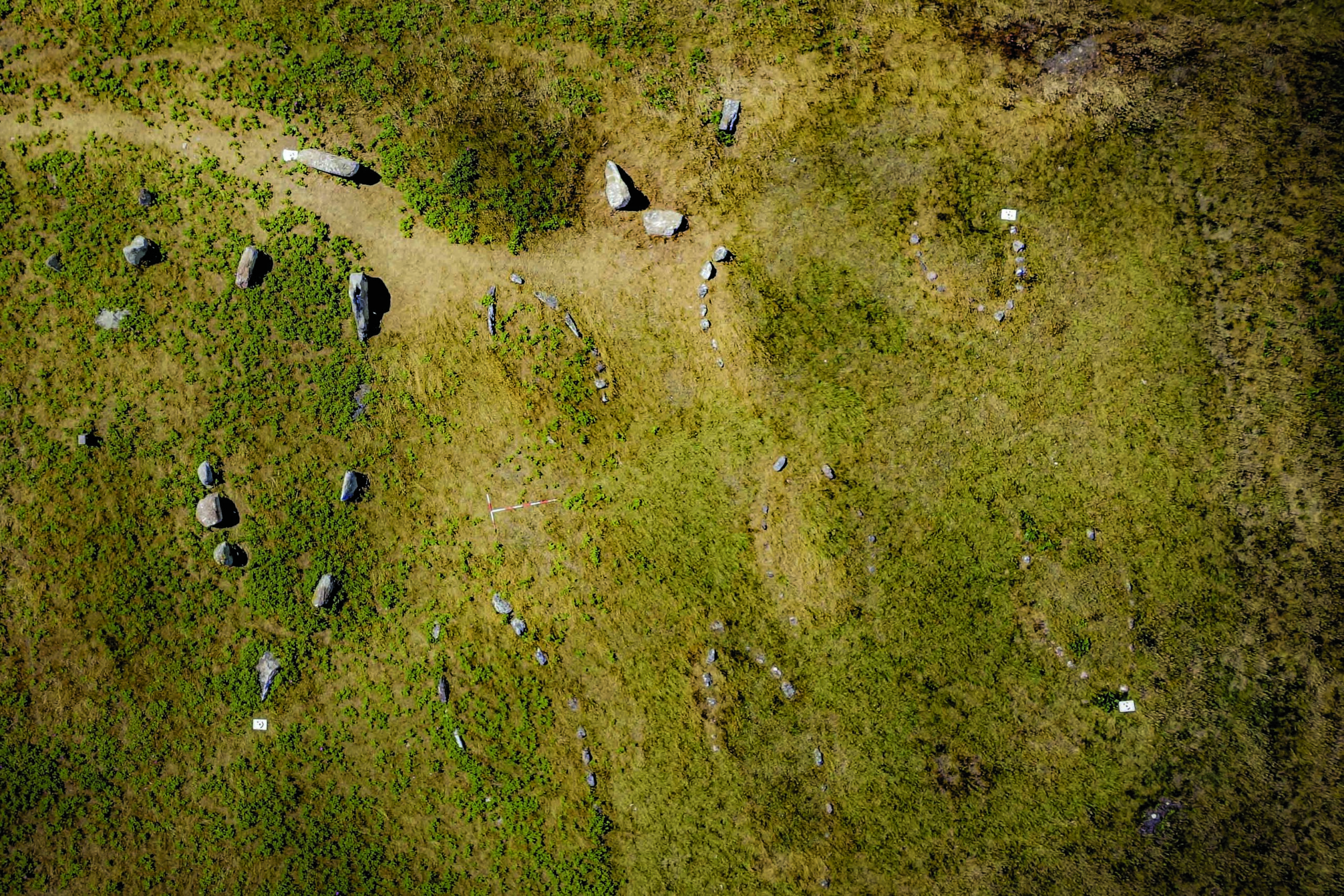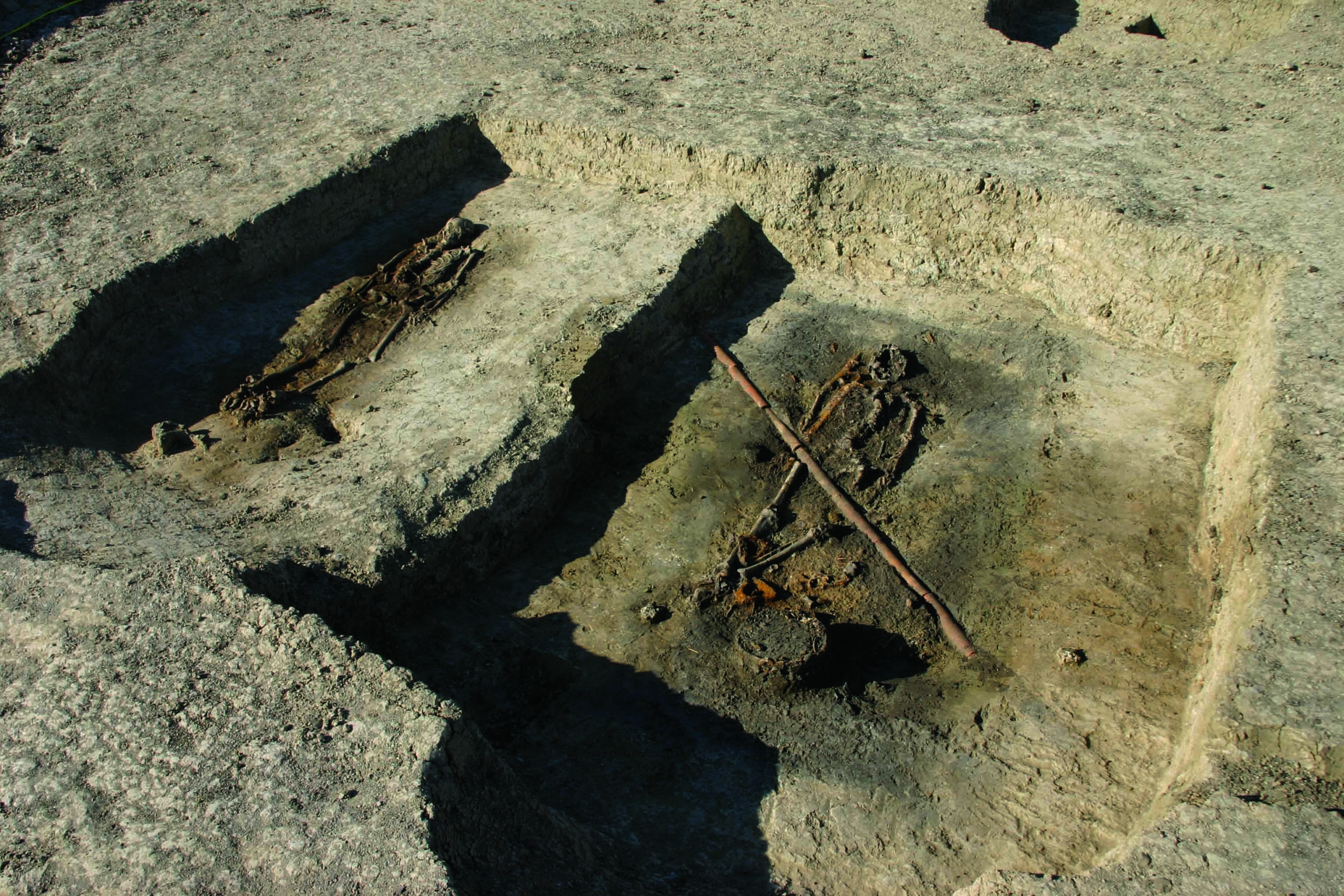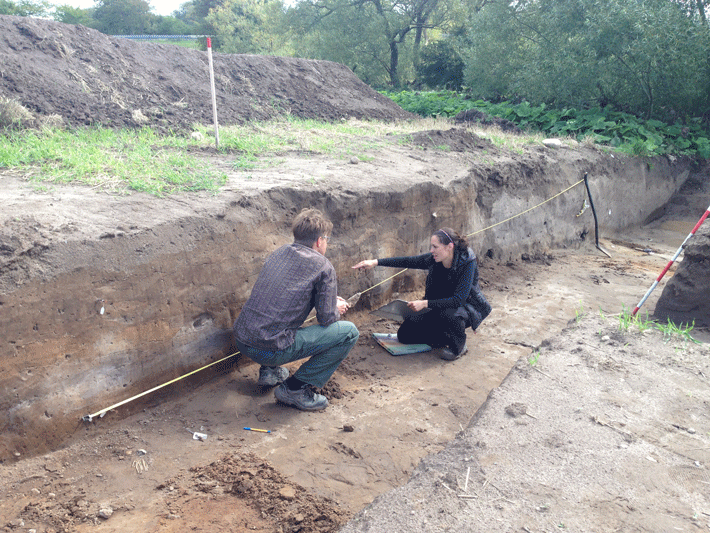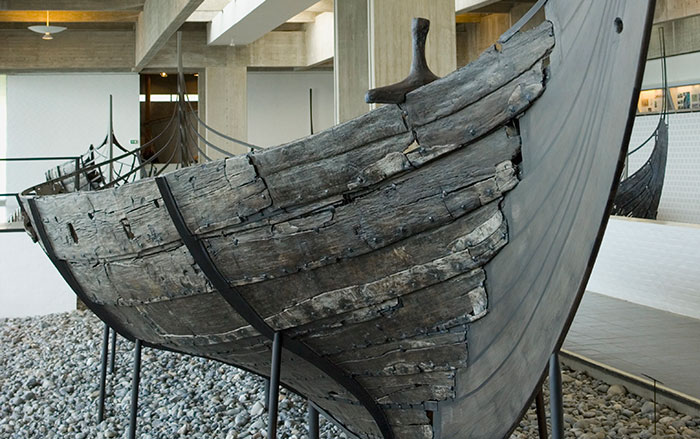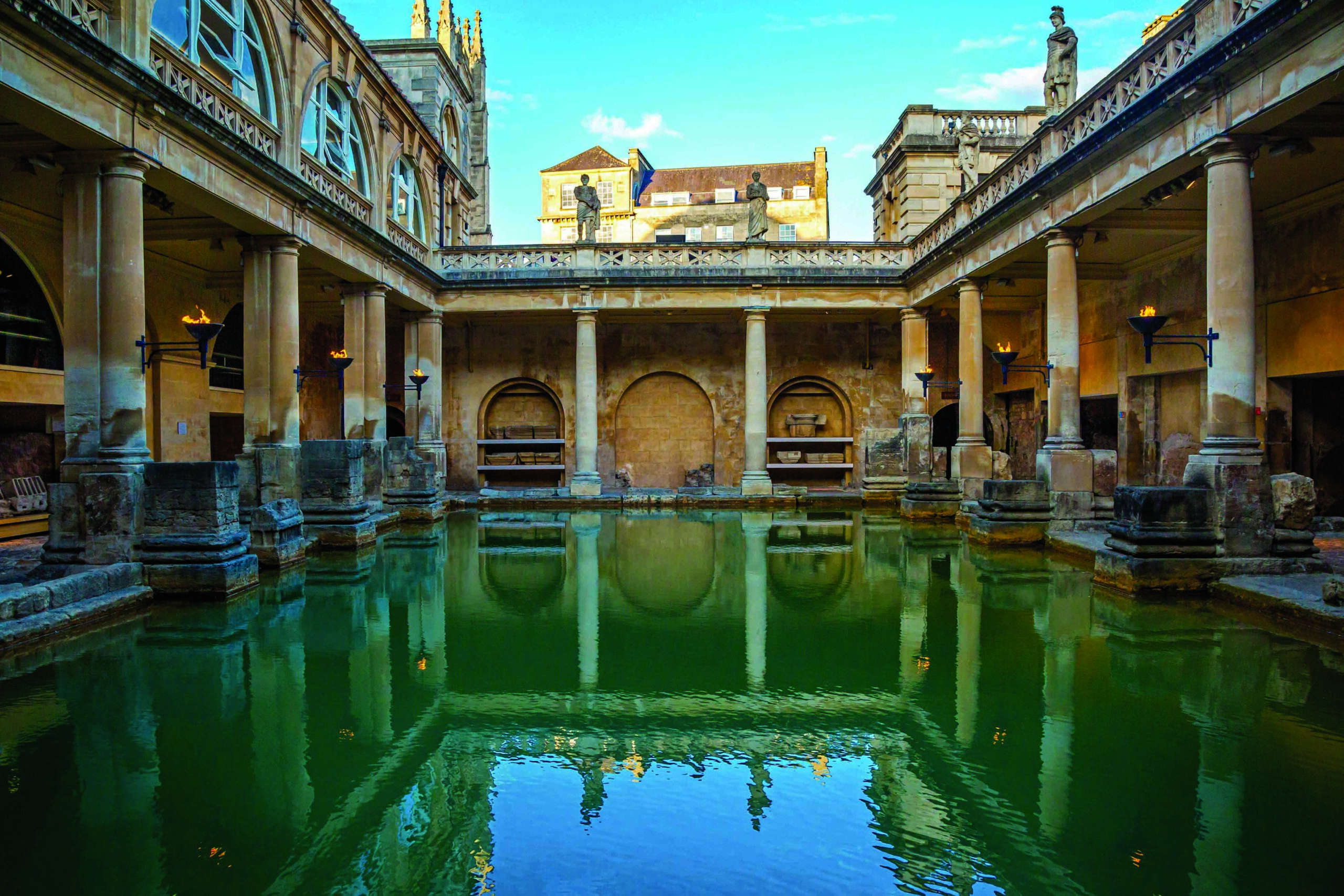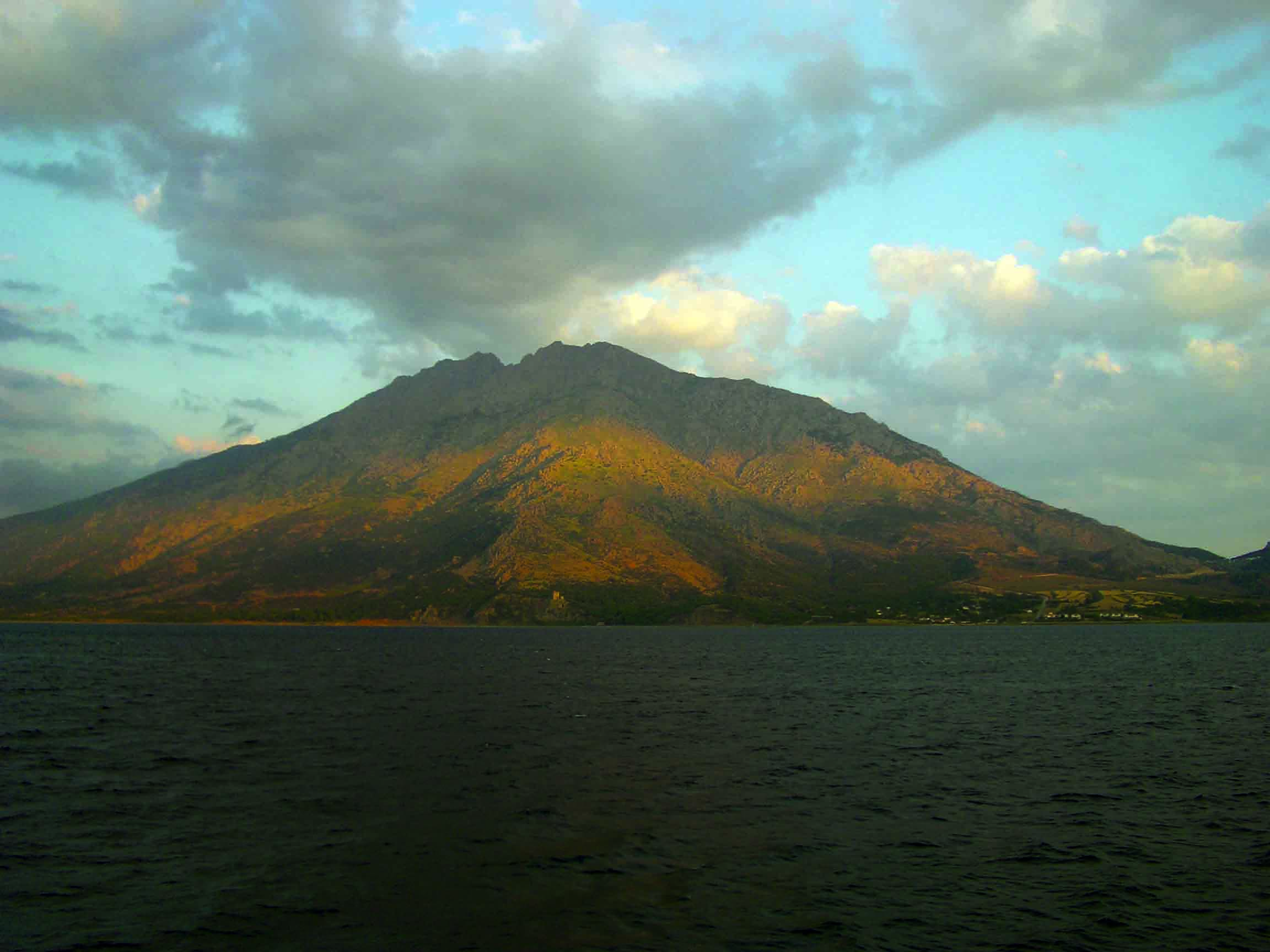
On the southern coast of the small Danish island of Hjarnø, just east of the mainland, lies a curious collection of stones arranged to form the outlines of boats. More than 1,000 such monuments, called ship settings, which often include burials, have been found throughout the Baltic region. Some of the oldest examples, dating to as early as 1300 B.C., are located in southern Sweden. Based on grave goods uncovered in a 1936 excavation, the Hjarnø ship settings are believed to date to the late Iron Age (A.D. 600–800) or Viking Age (A.D. 800–1000). The tradition, which had faded, was revived during this period, says Erin Sebo, a medievalist at Flinders University who led a survey of the Hjarnø settings in 2018.
At first glance, these settings, known as the Kalvestene, or “calf stones”—because they are located on a stretch of land fit only for grazing livestock—seem unremarkable. The 10 ship shapes are neither particularly numerous nor big. Each measures around six feet long, with one exception that is 40 feet long. Yet, for reasons that have never been fully understood, the Kalvestene attained a surprising level of renown in medieval Scandinavia. The earliest surviving mention of the ship settings comes from Saxo Grammaticus, a twelfth-century Danish theologian based in Lund, which is now in southern Sweden. Saxo identifies the Kalvestene as the burial place of a legendary king named Hiarni, a peasant who was crowned after writing a great poem upon the death of Frothi, the previous king. After Hiarni was slain by Frothi’s son, Saxo writes, he was buried in a barrow, or mound, on Hjarnø.
Saxo likely never saw the Kalvestene, says Sebo, as no evidence exists that there was ever a barrow there. Still, his account was frequently repeated over the centuries. Among those to spread the tale was a professor and antiquarian at the University of Copenhagen named Ole Worm, who published a description and drawing of the Kalvestene in 1650. Worm recorded at least 20 settings, including three that were circular, along with what appear to be small cairns. “It’s very unusual to have an early modern description of a Viking site,” says Sebo. “Worm’s description had the potential to reveal what the site was like nearly four hundred years ago, perhaps before significant erosion had taken place or people had stolen stones for building.” However, neither the 1936 excavation nor a 2009 magnetometer survey had detected anything beyond the 10 ship settings currently visible.
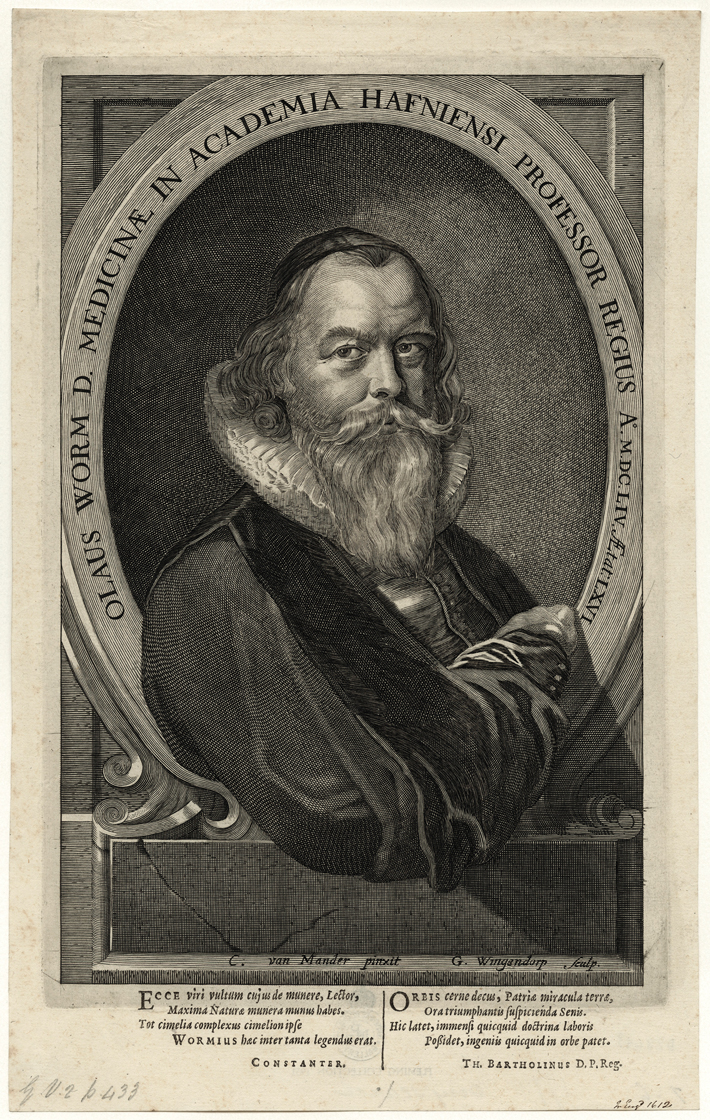
In their recent survey, Sebo and a team of archaeologists documented all the extant stones, took aerial photographs, and used side-scan sonar to search for offshore remains. They detected two raised areas that might indicate previously unidentified settings and may correlate with some of those illustrated by Worm. When they compared their overall results with his drawing, Sebo says, they found that parts of the rendering are so accurate that Worm must have seen the site firsthand. But other parts appear to have been greatly exaggerated. This mix of faithful representation and invention is representative of the nature of academic inquiry of the age—and of Worm’s work in other fields. For example, he established that purported unicorn horns were actually narwhal tusks, but reportedly argued that folk wisdom attributing poison-neutralizing properties to the “horns” was sound. “In the early modern period, you are just starting to see the beginning of modern ideas of scientific accuracy,” says Sebo.
She suggests Worm embellished his drawing so the Kalvestene would resemble other landscapes of Viking Age ship settings in Denmark, which usually include cairns and settings of various shapes. In doing so, she argues, he ignored what she thinks makes the Kalvestene so interesting—the uniform shape and size of all but one of the settings. Unlike others in Denmark, they most closely resemble the much earlier settings found in southern Sweden. Perhaps, suggests Sebo, Swedish sailors who stopped at the island on their way to a nearby trading center on the mainland brought word of this style of grave field, which was then adopted by Danish locals. Centuries later, reports of the Kalvestene and the legend of King Hiarni may have been carried by sailors back to Saxo in southern Sweden, where he made them famous.


